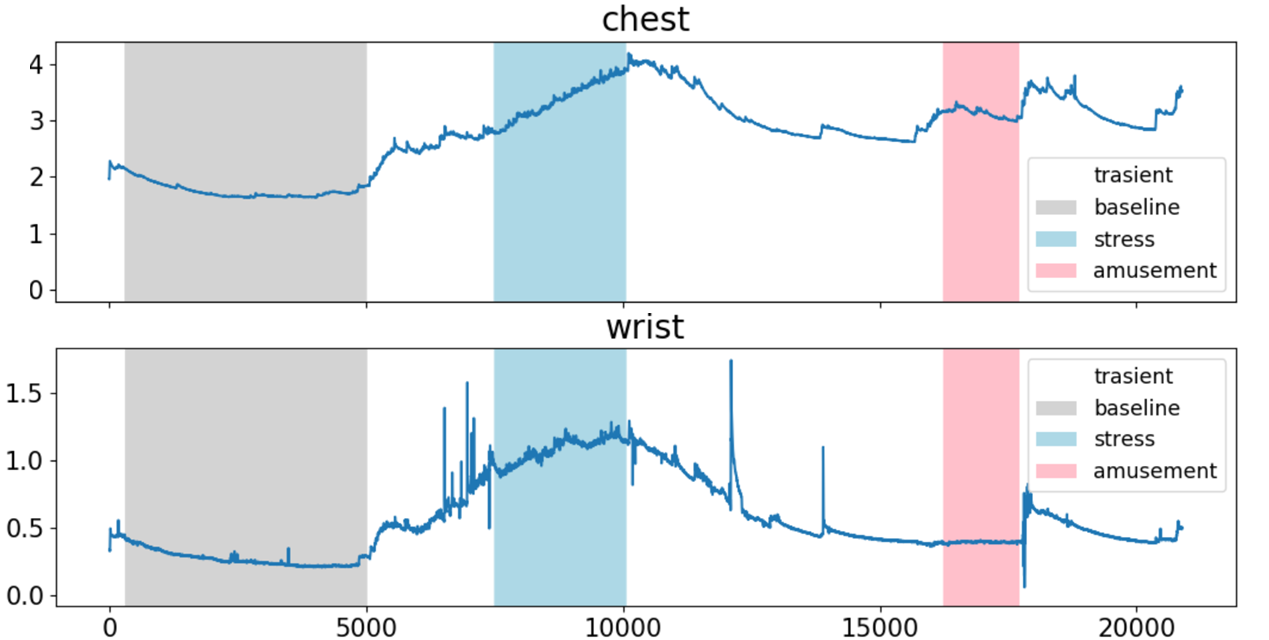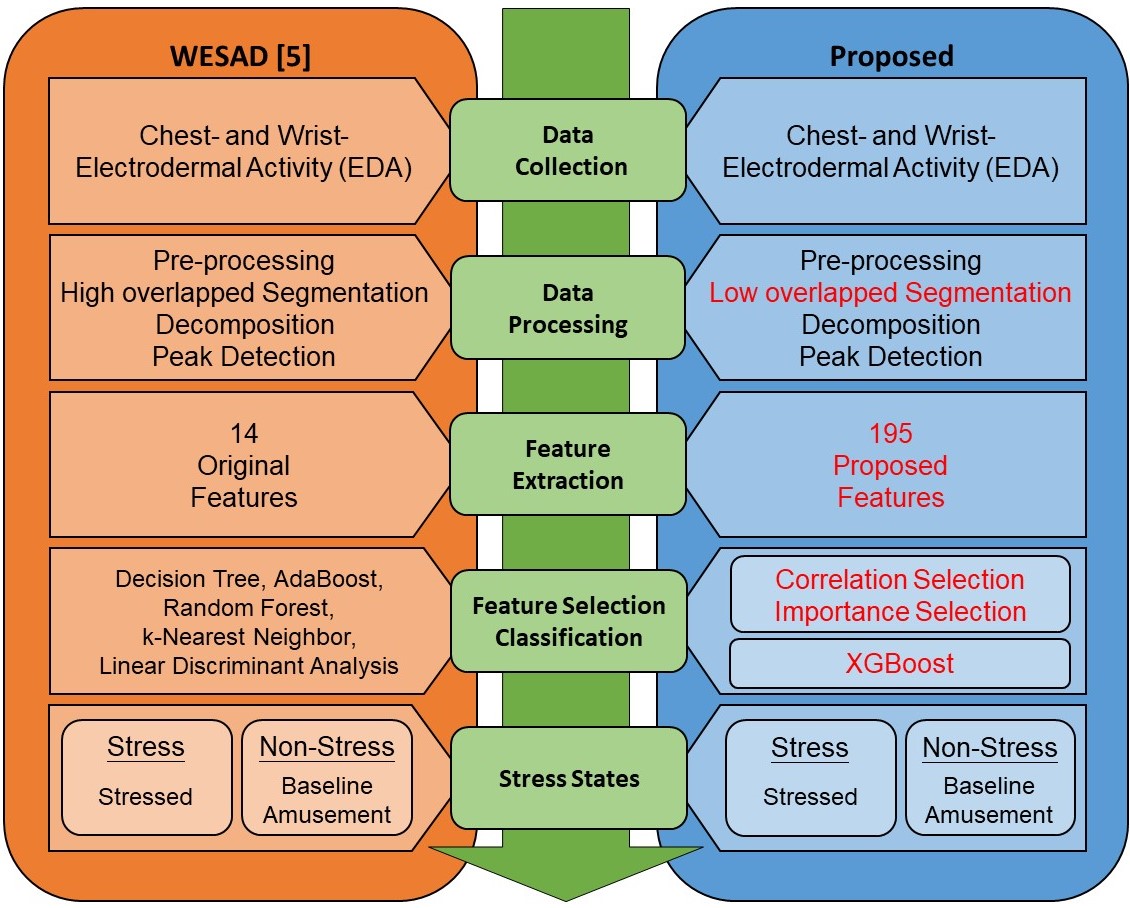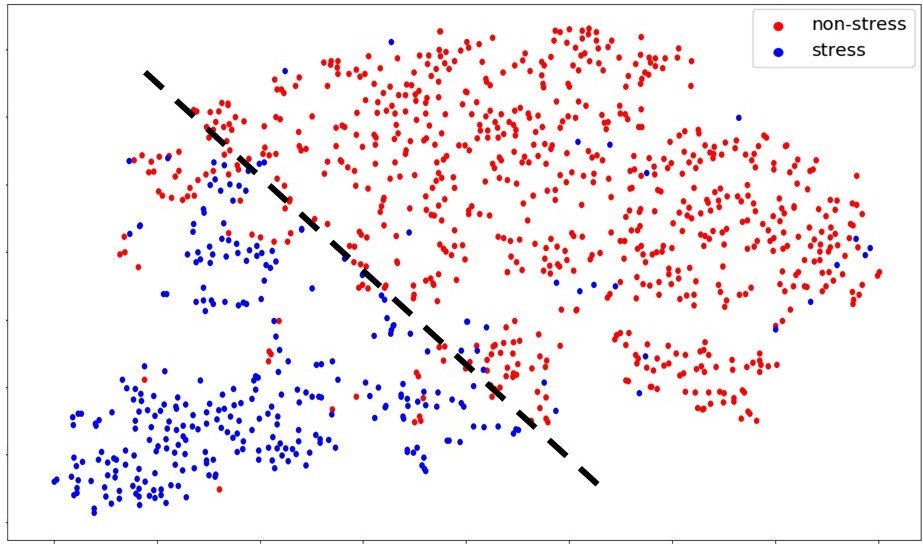Feature Selection Framework for XGBoost Based
on
Electrodermal Activity in Stress Detection
Publication - IEEE SiPS 2019
Cheng-Ping Hsieh, Yi-Ta Chen,
Win-Ken Beh, and An-Yeu (Andy) Wu

Figure 1. Electrodermal activity in stress detection experiments on WESAD dataset.
Since stress has a strong influence on human’s health, it is necessary to automatically detect stress in our daily life. In this paper, we aim to improve performance and obtain dominant features in stress detection based on Electrodermal Activity (EDA) of chest and wrist which are shown above on Figure 1. Compared to methods in Wearable Stress and Affect Dataset (WESAD), we propose several enhancements to get higher f1-scores, including less overlapped signal segmentation, more signal processing features, and extreme gradient boosting classification algorithm (XGBoost) which are listed below on Figure 2.

Figure 2. Overall view of the processing flow. Red text are several modifications and methods we proposed
Furthermore, we select dominant features according to their importance in classifier and correlation among other features while keeping high performance. Experiment results show that with 9 dominant features in XGBoost, we can achieve 92.38% (+17.87%) and 89.92% (+14.58%) f1-scores compared to WESAD on chest- and wrist-based EDA signal respectively. The features we choose can viewed as a nine-dimensional vector and we projected all data segments on a two dimensional space by t-SNE, which we can distinguish the data distribution easily, as shown below in Figure 3. For more information, please refer to our paper and our code is also publically available on GitHub.

Figure 3. t-SNE visualization for dominant features based on EDA signal.